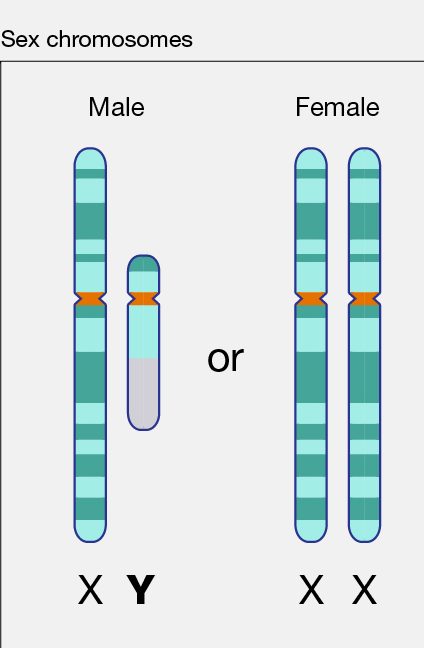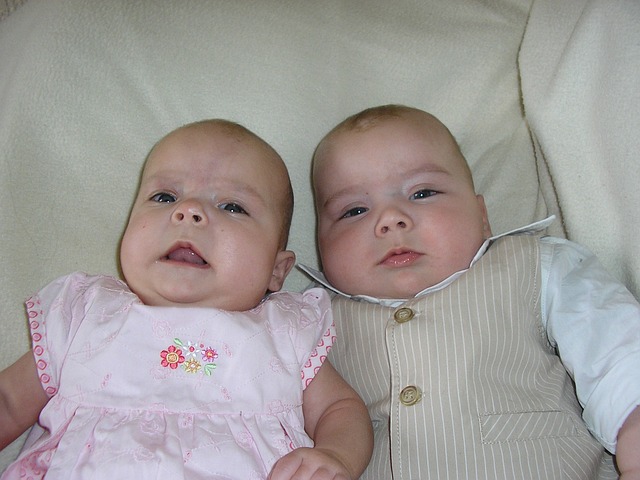Sex and Gender
When filling out a document such as a job application or school registration form, you are often asked to provide your name, address, phone number, birth date, and sex or gender. But have you ever been asked to provide your sex and your gender? As with most people, it may not have occurred to you that sex and gender are not the same. However, sociologists and most other social scientists view sex and gender as conceptually distinct.
- Sex refers to physical or physiological differences between males and females, including both primary sex characteristics (the reproductive system) and secondary characteristics such as height and muscularity.
- Gender is a term that refers to social or cultural distinctions associated with being male or female. Gender identity is the extent to which one identifies as being either masculine or feminine (Diamond 2002).
Sex refers to the anatomical and other biological differences between females and males that are determined at the moment of conception and develop in the womb and throughout childhood and adolescence. Humans and many other mammals have one pair of sex chromosomes in each cell. Females have two X chromosomes while males have one X and one Y chromosome. The Y chromosome is very small. It likely contains 50 to 60 genes and represents 2% of a cell’s total DNA. Because only males have the Y chromosome, the genes on this chromosome tend to be involved in male sex determination and development (National Human Genome Research Institute 2022).

When babies are born, they are assigned a gender based on their biological sex—male babies are assigned as boys, female babies are assigned as girls, and intersex babies (those who are born with sex characteristics that do not fit the typical definitions for male or female bodies) are usually relegated into one gender category or another. Scholars generally regard gender as a social construct, meaning that it doesn’t exist naturally but is instead a concept that is created by cultural and societal norms. From birth, children are socialized to conform to certain gender roles based on their biological sex and the gender to which they are assigned.

The term gender roles refers to a society’s expectations of people’s behavior and attitudes based on whether they are females or males. Understood in this way, gender, like race, is a social construction. How we think and behave as females and males is not etched in stone by our biology but rather is a result of how society expects us to think and behave based on what sex we are. As we grow up, we learn these expectations as we develop our gender identity, or our beliefs about ourselves as females or males.
These expectations are called femininity and masculinity. Femininity refers to the cultural expectations we have of girls and women, while masculinity refers to the expectations we have of boys and men. A familiar nursery rhyme nicely summarizes these two sets of traits:
What are little boys made of?
Snips and snails,
And puppy dog tails,
That’s what little boys are made of.
What are little girls made of?
Sugar and spice,
And everything nice,
That’s what little girls are made of.
Pause to Reflect
Discuss the following questions.
- As a child, what toys did you play with?
- In what ways did those toys reinforce the social construction of gender?
- In what ways did those toys resist the social construction of gender?
A person’s sex, as determined by biology, does not always correspond with gender. Therefore, the terms sex and gender are not interchangeable. A baby boy who is born with male genitalia will be identified as male. As he grows, however, he may identify with the feminine aspects of his culture. Since the term sex refers to biological or physical distinctions, characteristics of sex will not vary significantly between different human societies. For example, all persons of the female sex, in general, regardless of culture, will eventually menstruate and develop breasts that can lactate. Characteristics of gender, on the other hand, may vary greatly between different societies. For example, in American culture, it is considered feminine (or a trait of the female gender) to wear a dress or skirt. However, in many Middle Eastern, Asian, and African cultures, dresses or skirts (often referred to as sarongs, robes, or gowns) can be considered masculine. For example, the kilt worn by a Scottish male does not make him appear feminine in his culture.
The dichotomous view of gender (the notion that one is either male or female) is specific to certain cultures and is not universal. In some cultures, gender is viewed as fluid. In the past, some anthropologists used the term berdache to refer to individuals who occasionally or permanently dressed and lived as the opposite gender. The practice has been noted among certain Aboriginal groups (Jacobs, Thomas, and Lang 1997). Samoan culture accepts what they refer to as a “third gender.” Fa’afafine, which translates as “the way of the woman,” is a term used to describe individuals who are born biologically male but embody both masculine and feminine traits. Fa’afafines are considered an important part of Samoan culture. Individuals from other cultures may mislabel them as homosexuals because fa’afafines have a varied sexual life that may include men or women (Poasa 1992).
Media Attributions
- Baby siblings

